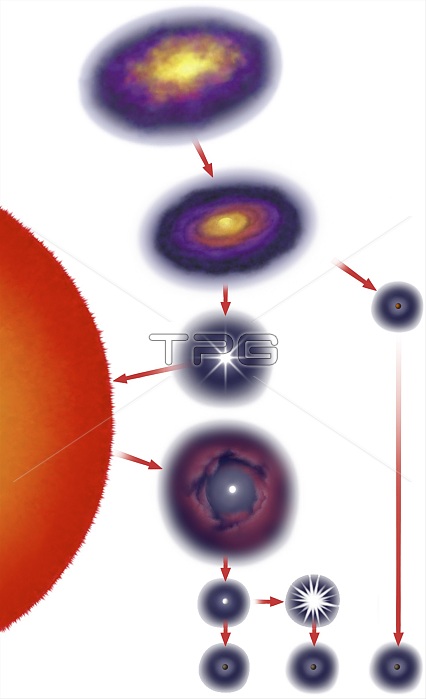
Stars are born in an immense cloud of hydrogen and dust called a nebula. Little by little, the cloud contracts; the increased pressure causes the temperature to rise. A protostar forms. It will take tens of millions of years for it to become a star. If the protostar has insufficient mass to cause a nuclear reaction, it becomes a brown dwarf. A protostar with greater mass triggers a process of thermonuclear fusion and begins its adult life; it becomes a main-sequence star. This is the case for our Sun right now. After about 10 billion years, the star becomes a red giant 100 times the diameter of the Sun and hundreds of times as bright. Gradually, the outer layers of the red giant dissipate into space. Lit by the core of the star, they form a planetary nebula for about 1 billion years. Gradually, the core of the star contracts until it is the size of Earth. The star becomes a white dwarf, an object of enormous density. If the white dwarf has a companion star, it will suck in its material and become an extremely bright nova. The star will eventually grow dimmer until it completely disappears. After a few billion years, it is simply a dead star, a black dwarf.
| px | px | dpi | = | cm | x | cm | = | MB |
Details
Creative#:
TOP19706662
Source:
達志影像
Authorization Type:
RM
Release Information:
須由TPG 完整授權
Model Release:
No
Property Release:
No
Right to Privacy:
No
Same folder images:

 Loading
Loading